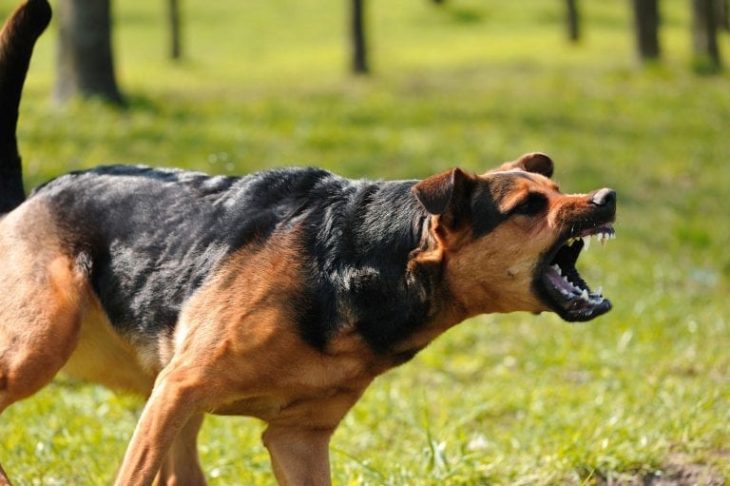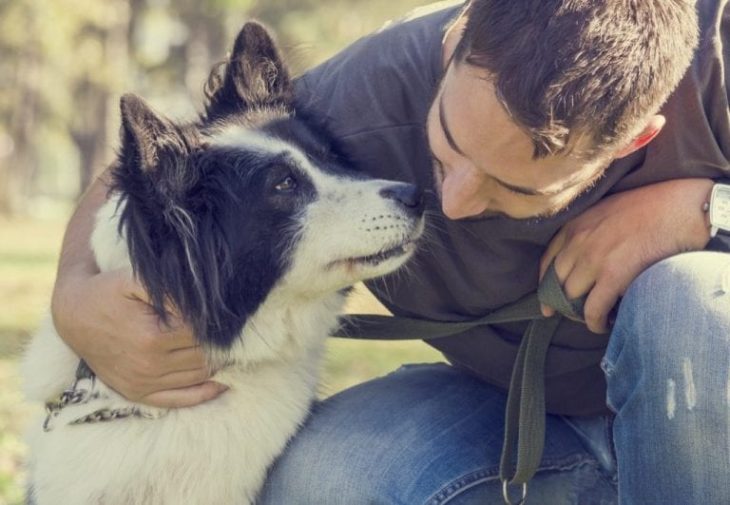Your dog is a big part of your life. Whether you’ve had your pooch for a while or you and your partner just adopted them, it’s hard to imagine a life without their adorable eyes looking up at you. You love your dog, and you love your partner.
You just want them to get along, so what do you do when your dog hates your partner? Some relationships start off with ups and downs, but there are a few things you can do to smooth out some of that tension.

Source: Wag!
Contents
Combat Fear and Anxiety
Your dog may view your partner as a threat. They’re likely not trying to scare your pup intentionally, or hopefully, they aren’t, but people don’t always understand how their stance and body language may be interpreted to a dog that’s much smaller than them.
Think of the way your partner interacts with your dog. Maybe they’re leaning forward in a way that might be menacing, or they’re making a lot of direct eye contact.
Try having them adopt a more neutral position, like turning slightly to the side and looking away. Or ask them to take off a hat your dog is threatened by, or put down something the dog doesn’t like or causes anxiety. Especially dogs who are adopted from a shelter won’t feel as threatened.
Positive Reinforcement
It’s possible that your dog prefers you because they see you as a resource, as the person who provides them with food, water, and shelter. It may feel nice to have that happy dog face looking up at you, but this behaviour isn’t healthy. Your dog isn’t protecting you but is acting out of fear of losing you and lashing out. This is damaging to your pup and potentially to people your pup perceives as a threat to you.
To combat this, pair positive things with your partner. Have them feed the dog with a little extra treat in the food to make it special compared to when you feed your dog. Your partner can also teach your dog a new trick, or have them do a trick they already know, to earn a good treat.
If you keep all those treats hidden until your partner gets home, your dog will begin to associate treats with your partner. You can even add treats when your partner pets the dog.

Source: Elite Daily
Long Walks and Playtime
Have your partner walk the dog. You can tag along if the relationship is still a little tense, but let them hold the leash. When your dog does something good, your partner can be the one that provides the treat.
Your dog will also be able to get more used to your partner being there.
This can happen when you teach your partner and dog to play with one another. Show them how to interact with little tricks and toys. Your dog knows how you play with them, so teach your partner to interact with your dog in the way your dog is used to.
Consistent Discipline
If you discipline your dog one way and your partner does so in another way, your pooch may get confused. This is true too if your partner is using harsher forms of punishment when you use reinforcement to correct behaviour. Your dog will automatically begin to prefer you and will react badly to your partner, so it’s important that everyone stays consistent.
Positive reinforcement is the best way to discipline your dog, so they associate good behaviour with rewards. Being confrontational won’t get you too far.
Source: Simply For DogsDon’t Interfere
You may end up feeling a little jealous that your pooch is spending more time with your partner now, but it’s important not to interfere. Allowing your dog to bond with other people is an important part of their emotional development, and will only be beneficial in the end.
Don’t get in the way of the bonding, but don’t force love either. Forcing contact won’t convince your dog to trust your partner, so move at your dog’s pace without pushing it. If your dog growls at your partner, don’t punish them for being scared. Instead, have your partner turn away and bring your dog to a separate room to help them calm down. You can also install a camera to watch your dog and partner interact when you’re not in the room. Pet Gear Lab has some great choices.
Conclusion
You don’t want your partner and dog to fight. The sight is just heart-breaking, but it doesn’t have to be permanent. Help your dog and your partner learn to get along so that the three of you can relax together instead of always stewing in tension.
Check out these tips on a few things you and your partner can try. If you go slowly, hopefully, your dog will warm up to your partner in no time.

Source: Best Life
